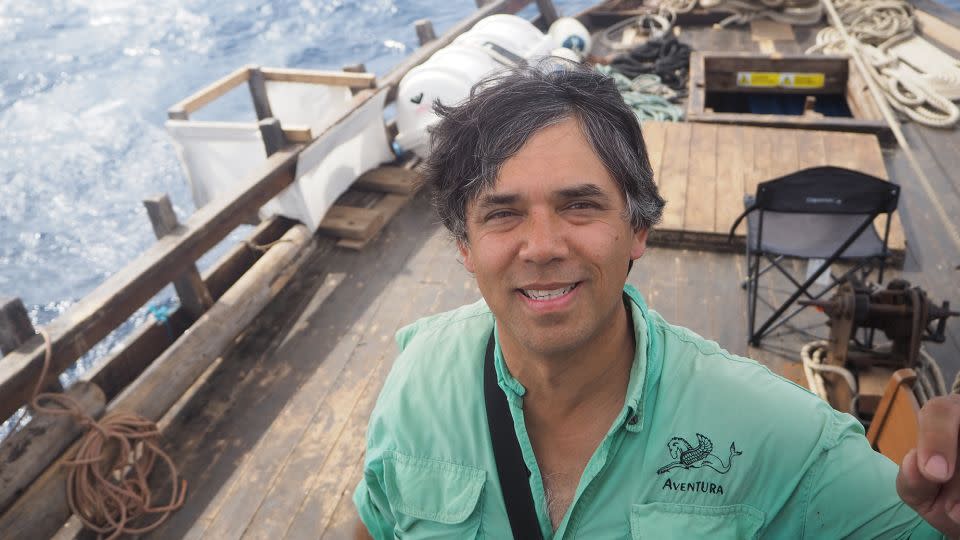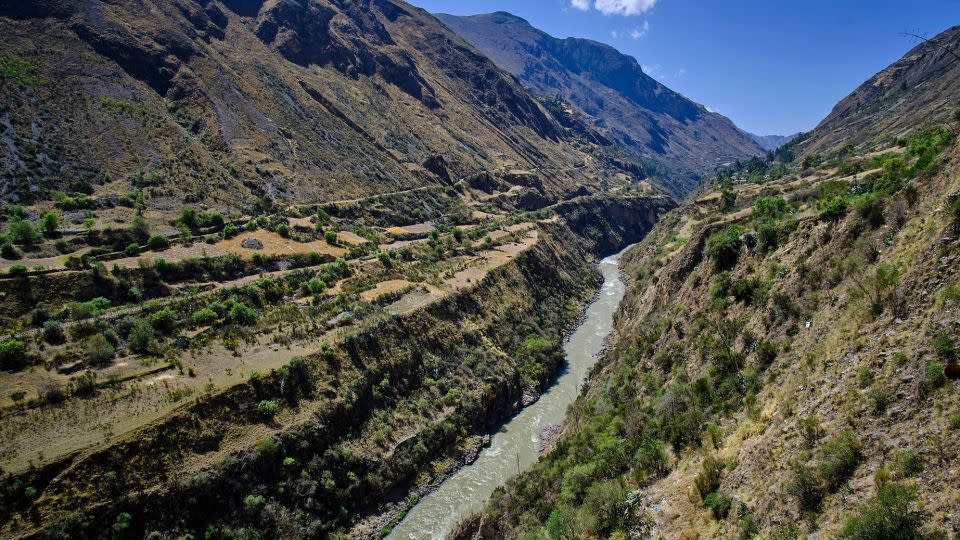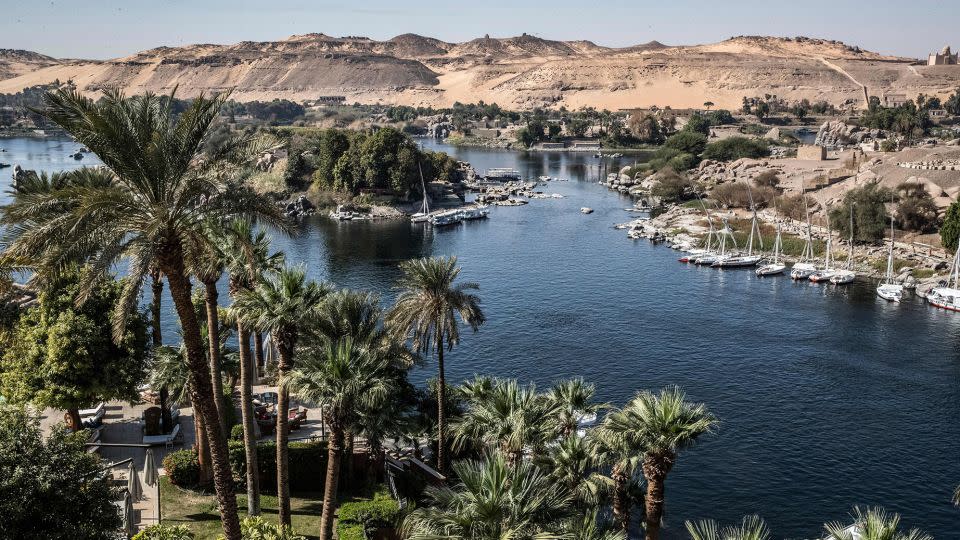What’s the world’s longest river? New expedition aims to settle the debate once and for all
Editor’s Note: Monthly Ticket is a CNN Travel series that spotlights some of the most fascinating topics in the travel world. In September, we’re celebrating superlatives as we look at some of the world’s biggest, longest and most expensive attractions and destinations.
In today’s modern age, it might be fair to assume that science has decisively answered some of the bigger questions regarding the natural world – or at least those dependent upon sheer physical measurements. But one seemingly straightforward conclusion has continued to confound: Just what is the longest river in the world?
Indeed, in 2023, science is still grappling with the answer.
The title of “world’s longest river” is officially bestowed upon Africa’s Nile by authoritative sources like Encyclopedia Britannica and Guinness World Records. But an upcoming Amazon River expedition by a team of international explorers and researchers – traveling via rafts, horseback and solar-paneled boats – is readying to contest that designation.
“The Nile is like a worm and the Amazon is an anaconda,” 55-year-old Brazilian expedition leader Yuri Sanada, a seasoned explorer and film producer, recounts of his colleague’s metaphorical take on the Amazon’s volume, which carries four times more water than any other river.
“So there’s no comparison – we have the biggest river. But the longest, we will see.”
A 7,000-kilometer expedition

The planned five-month-long expedition, due to set off in April 2024, aims to voyage the Amazon’s full length, using modern river-mapping satellite technology to scientifically prove once and for all that the Amazon is not just the world’s most voluminous river, but its longest.
Notably, the Amazon is not one singular stretch of water, but rather part of a greater “river system” spanning much of northern South America. Not dissimilar to the branches of a tree, its network includes multiple sources and tributaries.
The length dispute largely stems from the issue of where the Amazon begins. While Britannica and others have traditionally measured the river as starting from the headwaters of the Apurimac River, in southern Peru, American neuroscientist-turned-river expeditionist James “Rocky” Contos, 51, claims to have discovered a more distant river source – the Mantaro River, in northern Peru – while researching whitewater rafting routes in the country.
“I was aware that the most distant source of the Amazon was considered to be the Apurimac, but when I was gathering all information – maps, hydrographs, etc. – in preparation for my trip to Peru, I realized that another river appeared to be longer,” Contos says.
He further verified this information with topographic maps, satellite imagery and GPS measurements while kayaking there, which he published research on in 2014.
“The discovery of the new source adds 77 kilometers (48 miles) to the length of the Amazon compared to the previously considered source,” he says.
Sanada says Contos’s findings offer the expedition team an “excuse to be there,” explaining that while mapping the river is its ostensible goal, the expedition has greater aims of more fully documenting and shining a global spotlight on the Amazon rainforest region’s rich biodiversity – and the need for the worldwide community to work together to help conserve it.
The planned 7,000-kilometer (4,350-mile) spring expedition route will span the Amazon River’s course through Peru, Colombia and Brazil, starting at its newly purported source at the Mantaro, deep in the Peruvian Andes.
The Mantaro’s white waters will be navigated on a rafting expedition with Contos at the helm; once the Mantaro meets the Ene River, the voyage’s longer segment will begin aboard a trio of custom-built solar- and pedal-powered boats that will follow the remainder of the Amazon out to the Atlantic Ocean, on the Brazilian coast.
Sanada says that in early 2025 there will be a secondary expedition starting at the Apurimac River in Peru, the traditionally accepted source of the Amazon, which will allow for a second set of measurements. This segment will reportedly be accompanied by French explorer Celine Cousteau (granddaughter of famed oceanographer Jacques Cousteau) via horseback ride along the riverbanks.
Sanada is currently overseeing a team of roughly 50 collaborators on the project from across the Americas and Europe. The expedition has already secured some prestigious partnerships: support from the Explorers Club, an IMAX deal for a related film production and an assignment to produce a new Amazon river map for Harvard University.
Sanada says the expedition will also host a rotating cast of international scientific researchers, including from partner universities in Brazil, Peru, Colombia, the US and other countries, who will join at different stages with aims of bringing sustainable technology to traditional Amazonian communities.

“These projects will teach them how to treat the water, techniques on how to build better houses with natural materials, bring electric energy from renewable sources, waste treatment, electromobility transportation, and more,” he explains. “It’s going to really change the life of people there.”
The hybrid solar- and pedal-powered expedition boats themselves are meant to demonstrate an affordable, efficient and pollution-reducing alternative to the gas-powered motorboats currently in use by the local communities.
Developed in partnership with a local Brazilian university, the vessels are being constructed with locally sourced bioresin and natural fibers, as well as motors made from 3D printers. Following the expedition, boat motors will be donated locally in what Sanada calls “part of the legacy of the expedition.”
Armed escorts and bullet-proof cabins
However, despite these optimistic goals, this is not a journey without peril.
“In this kind of expedition, a lot of things can go wrong,” Sanada says, citing the potential for boats to collapse and wilderness risks (the jungle contains jaguars, anacondas, poisonous frogs and more).
“The most dangerous part,” though, Sanada says, is “the human interaction.” He notes every time the team comes across somebody in the wilderness, they’ll have to wonder, “Are they drug lords? Are they enemies? Or just a friendly tribe trying to invite you to have dinner with them?”
Accordingly, the expedition team is working with local authorities to secure armed escorts through areas known for illegal mining and drug trafficking; the boat cabins are also being outfitted with bullet- and arrow-proof fibers.
And Sanada is placing deep trust in his team. “I have local guides from the Amazon, from Peru – people who really know about the land and know about how to survive there,” he says.
Sanada feels the risks are well worth it.
“You cannot stop (because of risk). We are doing this for science. We are bringing this legacy for the Amazon,” he says.
He says it’s a privilege to be among only roughly 10 explorers, and the first South American, who have historically attempted to travel the river’s full length.
Ultimately, however, Sanada concedes that the expedition may not reach a conclusive answer about the river’s length or successfully prove that it actually is the world’s largest.
Dr. Suzanne Walther, an associate professor of environmental and ocean sciences at the University of San Diego, who specializes in river systems and measurements, explains that challenges with measuring rivers abound, owed to the waterways’ dynamic and complex nature and the potential for varying human interpretations around accepted river sources and endpoints.
She notes that rivers can “change over time in a variety of ways,” citing variations in movement, the water volume they contain, and in their seasonal patterns. “You can imagine then that if you’re measuring something and it is moving, that will actually change the outcome even if you measure it the exact same way,” she adds.
“Whether it’s because of the tools and atmospheric interference, or whether it’s the human component, there’s always a little bit of uncertainty with every measure we take.”
She points out that there’s also a certain man-made motivation to claiming a superlative geographic feature like the longest river, which can boost national pride and offer potential tourism revenue.
“It gives prestige to a place,” she says. “We place value on those things as humans, even if the rivers don’t care if they’re longer or not.”
A search for knowledge

Whatever the expedition’s outcome, Sanada says he’d like to explore the Nile next, using the same techniques and methods of measurement.
The Nile, which flows across northeastern Africa before reaching the Mediterranean Sea via Egypt, also faces debate around its own source, with more than one African nation claiming to contain the river’s headwaters.
“So let’s see if we survive this first, and then we plan the next one,” Sanada says.
After the expedition’s completion, a related full-length documentary as well as an IMAX film is expected to debut in 2026.
Sanada believes these projects can help boost regional pride and international tourism – and, in turn, conservation efforts in the Amazon – by demonstrating “how valuable it is, and why we have to preserve it.”
Ultimately, Sanada says that record or no record, “it’s all about a search for knowledge. We’re going to be showing the world what the Amazon is all about.”
For more CNN news and newsletters create an account at CNN.com

